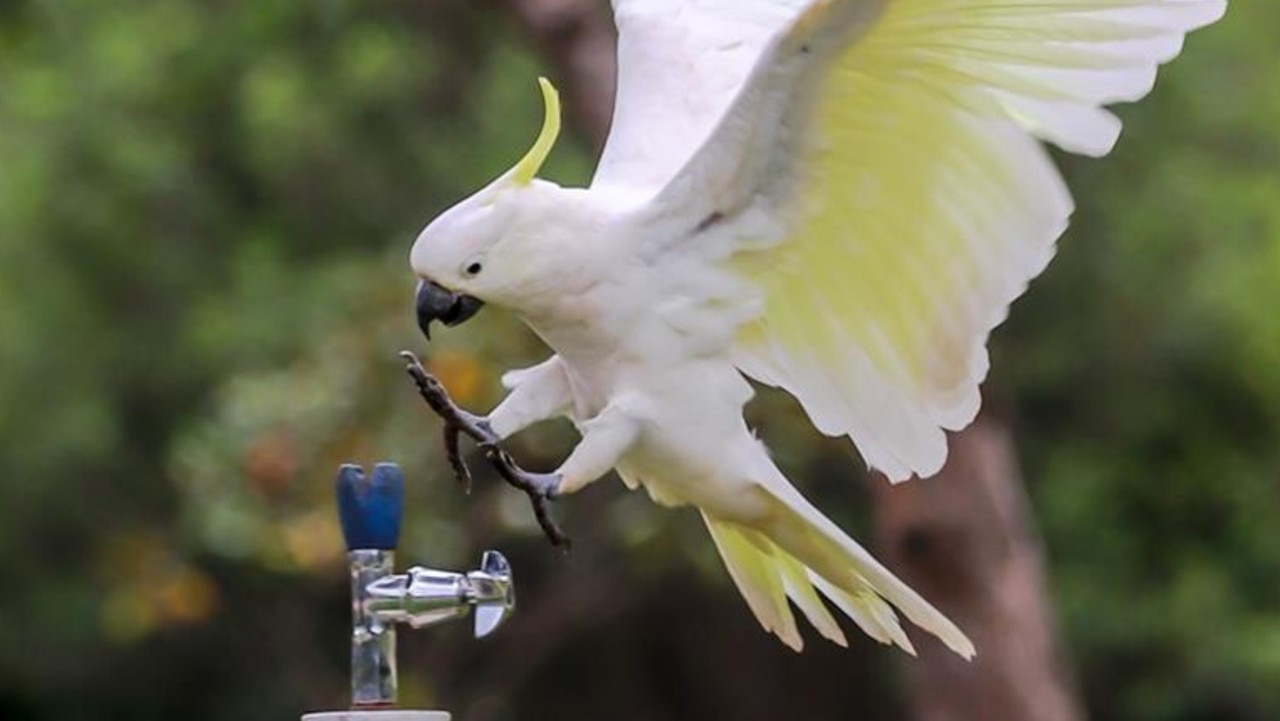Australia’s most dangerous animals are coming to a town near you
SPRINGTIME may seem all blue skies and sunshine, but the warmer weather means Australia’s most dangerous animals are coming to a town near you.

SPRINGTIME may seem all blue skies and sunshine, but it means one thing above all else.
The country’s killer creatures are coming for you.
Here’s your guide to the most dangerous animals around — and how to avoid a very Australian death.
SNAPPING JAWS
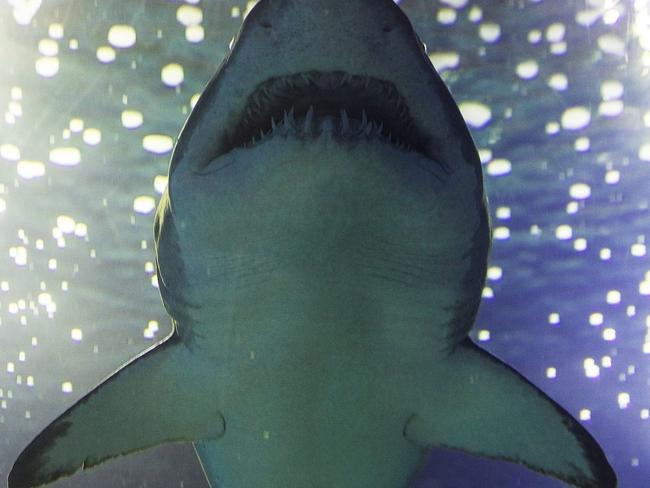
The great white is one of the most famous (and feared) species of shark — but the bull shark is among the most likely to attack humans. The tiger shark’s large size, scavenging nature and shallow-water feeding also make it dangerous.
To avoid being eaten by a shark, don’t go swimming in murky waters, don’t go where there are big schools of fish and always dive with a companion. Beware dangling your feet over the side of a surfboard as this can look like turtles in trouble. Avoid sunrise and sunset, particularly at an estuary, and don’t go swimming with your dog.
“In most cases, sharks don’t like our taste or our nasty hard bones,” says Australian Museum naturalist Martyn Robinson. “They might bite us and let us go, but we could still bleed to death.” In such an instance, first aid could save your life.
If you’re camping near a river in tropical areas of Australia, take note of signs about crocodiles. Don’t form patterns: crocs are excellent at figuring these out. If kangaroos feed at a certain time, crocodiles will lie in wait for them — they’ll do the same if you have a set time for your morning or evening dip.
They will approach stealthily before snapping their huge jaws shut, rolling their prey around their mouth to dismember it if it is a large animal, and saving some limbs for later.
VENOMOUS SNAKES

We’re coming into snake season, as the warmer weather brings them out to bask in the sunshine and get ready for feeding and then breeding season.
From the Eastern Brown Snake to the Common Death Adder, most Australian snakes are very poisonous and all should be treated with utmost caution.
But they won’t waste their venom unless you’re potential prey, so if you see them, you should be able to just step out of the way.
“The most toxic snake anywhere in the world is the inland Taipan and it’s never killed anyone,” Mr Robinson told news.com.au. “That’s because it lives in remote areas, it’s not particularly aggressive and there aren’t many of them.
“But the coastal taipan lives in areas of high population and is fairly bright — it will defend itself if it’s hit with a stick, stepped on or run over on a bicycle.”
That’s one more risk factor cyclists probably don’t need.
SHAKE IT OFF
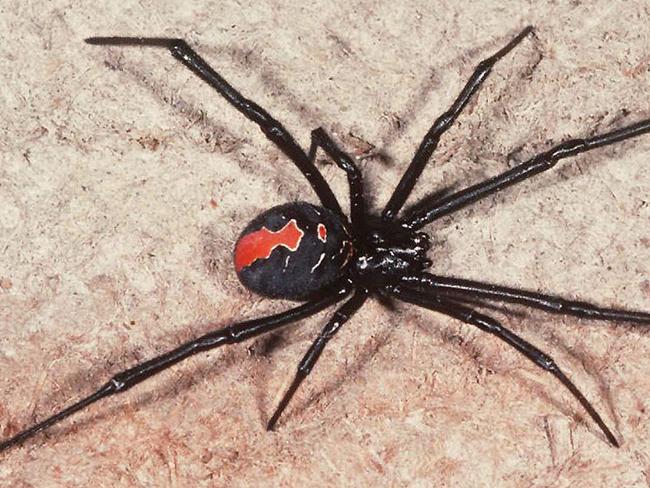
You don’t have to be out in the bush to be a target. The attack could come in a city street or even the dark corners of your own home.
The male funnel-web spider doesn’t want any more to do with you than you do with it, but unfortunately it’s too blind to avoid you, and will scuttle into any dark spot as it wanders around your warm house looking for females. So shake off any clothes or shoes you’ve left on the floor before you put them on, or you could both be in for a nasty shock.
If you are stung, apply a pressure bandage (not a tourniquet) and get someone else to drive you to medical assistance.
With a Redback bite, early symptoms are pain, sweating, muscular weakness, nausea and vomiting. Apply an icepack and seek anti-venom — more than 250 people are administered the lifesaving anti-venom each year.
Watch out too for the trapdoor spider, paralysis tick and giant centipede.
SMALL BUT DEADLY

Of all things, it’s honey bees that are the deadliest creatures around, with 19 Australians dying each year from allergic reactions to their sting.
And Tasmania is home to the deadliest ant on earth, the jack jumper, so named because it jumps aggressively at intruders.
Its venom can cause an anaphylactic allergic reaction, which you might recognise by increased heart rate and falling blood pressure.
Wildlife expert Ben Southall, winner of the Best Job in the World competition, was stung by an Irukandji jellyfish — a stinger about the size of a thumbnail — during his placement.
“It felt almost like half a beesting,” he told news.com.au. “About half an hour later I got what’s called Irukandji syndrome. My kidneys and liver felt like they were stuck in a vice, my jaw convulsed and my hands started to shake.”
He was given a “cocktail of drugs” at Hamilton Island medical centre, and began recovering after around eight hours of suffering.
“It’s important to learn to identify potentially dangerous insects and animals and take sensible precautions to avoid being stung or bitten,” said Mr Southall, who is now representing Australia Post’s “Things that Sting” stamp collection and says he has finally opened up to the idea of wearing a stinger suit.
A wetsuit and staying in netted off areas can help too.
DANGERS OF THE DEEP
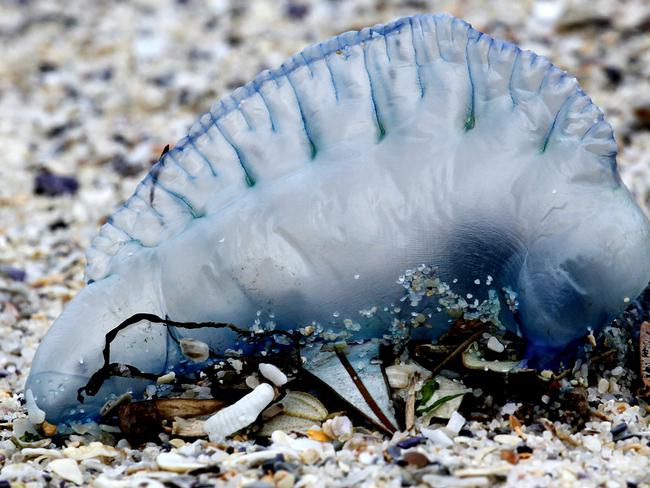
The box jellyfish works differently to the Irukandji. The searing pain is immediate thanks to its 60 tentacles. Its toxins attack heart and nervous system while the extreme pain usually makes a victim suffer heart failure or go into shock and drown.
The bluebottle jellyfish is not a single animal but a colony of four polyps that depend on each other or survival. Delivers a painful sting even when washed up dead on the beach
Intense pain develops into ache that spreads to joints and can cause shock and respiratory problems.
A blue-ringed octopus is generally a dull brown, shy creature, but it flashes bright blue markings when disturbed — which can make children more likely to touch them. Extremely powerful venom then causes numbness of lips and tongue and then complete paralysis of breathing muscles.
The reef stone fish is the most venomous fish in the world. It has thirteen stout spines in the dorsal fin which can inject a highly toxic venom, which causes intense pain and is believed to have killed many Pacific and Indian Ocean islanders.
It sits on the bottom of the ocean, so you’d have to be very unlucky to touch it. If you are one of the unfortunate few, very hot water can relieve the pain as you seek medical help.
The Smooth Stingray is not aggressive but has a venomous spine on the tail which is capable of inflicting severe or potentially fatal wounds.
If you spot a red and black lionfish, on the other hand, make a quick exit, as they tend to be highly aggressive.
Be careful what you take home to cook up when you’re fishing too — the innocuous-looking Smooth Toadfish is toxic to humans.
SURPRISE ASSASSINS
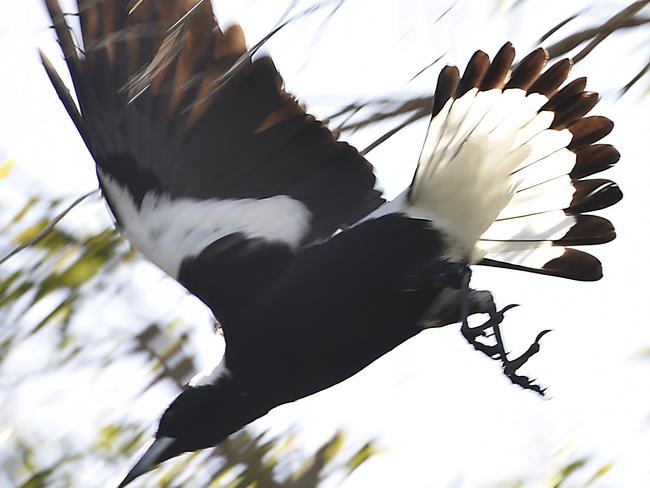
One of the most unexpected of Aussie killers is the magpie.
The common suburban bird frequently makes dramatic swoops to protect its nest and impress females, leading cyclists, drivers and pedestrians to swerve into traffic.
“They rarely make contact,” says Mr Robinson. “But people taking excessive action when they swoop can lead to death.”
The swooping grows more frequent as chicks get older, because the male adult has invested so much time in protecting them,
“Swooping season” last until early October. Once a magpie’s chicks can fly, the aggression stops and they will lead their children away from danger rather than attack.
The similarly unthreatening platypus has sharp spurs on each ankle that can cause severe pain to humans, which although not lethal is said to be excruciating.
Cute and cuddly wombats can become aggressive as they mature. In April 2010 in Victoria, a man was charged and knocked down by the animal, which mauled his leg and left scratch marks on his chest.



